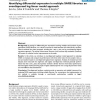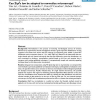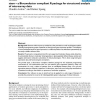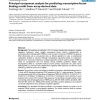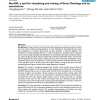86
Voted
BMCBI
2005
15 years 17 days ago
2005
Background: In testing for differential gene expression involving multiple serial analysis of gene expression (SAGE) libraries, it is critical to account for both between and with...
BMCBI
2005
15 years 17 days ago
2005
Background: Normalization is the process of removing non-biological sources of variation between array experiments. Recent investigations of data in gene expression databases for ...
116
Voted
BMCBI
2005
15 years 17 days ago
2005
Background: Genome wide microarray studies have the potential to unveil novel disease entities. Clinically homogeneous groups of patients can have diverse gene expression profiles...
221
click to vote
BMCBI
2005
15 years 17 days ago
2005
Background: Alignment of RNA secondary structures is important in studying functional RNA motifs. In recent years, much progress has been made in RNA motif finding and structure a...
152
Voted
BMCBI
2005
15 years 17 days ago
2005
Background: The responses to interleukin 1 (IL-1) in human chondrocytes constitute a complex regulatory mechanism, where multiple transcription factors interact combinatorially to...
130
click to vote
BMCBI
2005
15 years 17 days ago
2005
Background: Cluster analyses are used to analyze microarray time-course data for gene discovery and pattern recognition. However, in general, these methods do not take advantage o...
116
Voted
BMCBI
2005
15 years 17 days ago
2005
Background: Recognition codes for protein-DNA interactions typically assume that the interacting positions contribute additively to the binding energy. While this is known to not ...
140
click to vote
BMCBI
2005
15 years 17 days ago
2005
Background: Accurate diagnosis of cancer subtypes remains a challenging problem. Building classifiers based on gene expression data is a promising approach; yet the selection of n...
125
Voted
BMCBI
2005
15 years 17 days ago
2005
Background: A large volume of data and information about genes and gene products has been stored in various molecular biology databases. A major challenge for knowledge discovery ...
BMCBI
2005
15 years 17 days ago
2005
Background: Many complex random networks have been found to be scale-free. Existing literature on scale-free networks has rarely considered potential false positive and false nega...
